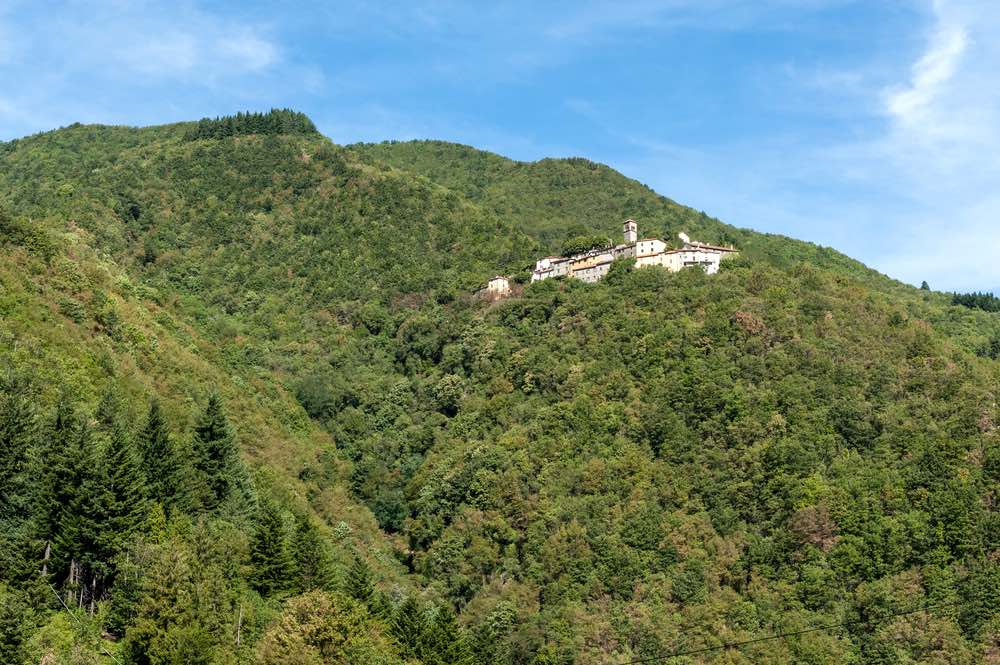
Discovering the Pistoiese Mountain

The Pistoiese Mountain is undoubtedly an enchanting place that offers a great environmental heritage of interest. The region is a real treasure, constantly transforming, captivating with its multifaceted charm. In this article, we will take you on a journey to discover the variety and beauty of the plant and animal world of this mountain, while also exploring its natural history and human presence in the area.
The Beauty of the Pistoiese Mountain
Imagine being at 1000 meters above sea level, surrounded by the blue sky, the pristine light of a splendid sun, and the lush greenery of the forests and meadows of the Pistoiese Apennines.
Here, you can savor freshly cut grass and breathe in the most authentic scents of nature.
In fact, the Pistoiese Mountain offers unique experiences throughout the year. While winter is the best season to enjoy the snow, autumn and spring are the most suitable months for trekking and walks.
During these periods, you can admire the colorful foliage and witness the landscape awakening from the winter cold. In the summer, on the other hand, it is the time to plan exciting excursions to explore the territory and the Apennines.
The Most Beautiful Peaks to Explore
If you are a hiking enthusiast, we recommend exploring some of the most beautiful peaks of the Pistoiese Mountain.
The Balzo delle Rose, Monte Gomito, and Monte Maiori offer breathtaking views and allow you to immerse yourself in untouched nature.
During these hikes, you will have the opportunity to appreciate the historical, artistic, and spiritual richness of this territory.
For example, the small town of Marliana hosts five churches and an oratory.
In particular, the Pieve di Santa Maria Assunta in Gavinana is famous for its works of art, including an organ with 2000 pipes made by the renowned Pistoiese organ builder Pietro Agati.
What to See on the Pistoiese Mountain
Other must-visit places on the Pistoiese Mountain include:
1. Ponte Sospeso (Suspended Bridge)
The Ponte Sospeso is a wonderful pedestrian path that connects the two banks of the Lima stream between Popiglio and Mammiano Basso.
The walkway is characterized by considerable length, narrow width, swaying motion, and high altitude.
Walking across it will be an exciting experience, as from up there, you can admire the landscape from a suspended perspective.
Built-in 1923, the walkway was intended to allow factory workers to reach their workplace more quickly.
2. Astronomical Observatory of Pian dei Termini
The Astronomical Observatory of Pian dei Termini is equipped with two observation domes and Newtonian telescopes to admire the starry sky on summer nights.
Every year, especially in summer, the Astronomical Observatory is populated with people who marvel at the sky.
3. Ecomuseo della Montagna Pistoiese (Ecomuseum of the Pistoiese Mountain)
The Ecomuseum of the Pistoiese Mountain is located at Palazzo Achilli di Gavinana and is well integrated with the neighboring municipalities.
It is characterized by six outdoor itineraries, including the iron, ice, daily life, sacred art, stone, and naturalistic routes.
These itineraries allow you to discover the magical places that live up there, along with museums in the area, such as the Museum of the People of the Pistoiese Apennines in Rivoreta. Their website offers a weekly newsletter with all the information about events.
Quick Booking snippet
The best panoramic points in Mugello to know before visiting this beautiful land. Mugello, a hidden gem in the heart of Tuscany, is a land of breathtaking natural beauty and stunning vistas. If you’re visiting, there are numerous must-see panoramic point to know before visiting this beautiful land. 1. Monte Giovi Monte Giovi offers a […]
Mugello is a hidden gem offering a perfect mix of history, culture, and natural beauty. One of the most authentic and fascinating experiences you can have in this land is a horseback ride. Traversing the rolling hills, woods, and medieval villages of Mugello on horseback allows you to fully immerse yourself in the magic of […]
Tuscany, an Italian region renowned for its cultural and historical wealth, is home to numerous UNESCO World Heritage Sites. These sites represent not just the architectural and artistic beauty of the region but also its significant historical heritage.
Italian cuisine, celebrated globally, is a mosaic of flavors and traditions. From the rolling hills of Tuscany to the bustling streets of Naples, each region contributes its unique essence to what we recognize as Italian cuisine. This culinary journey explores how history, culture, and regional diversity have shaped the renowned gastronomy of Italy.
Tuscany is world-renowned for its rich winemaking tradition, a heritage rooted in centuries of history and culture. In this detailed guide, which is like a true oenological journey, we will discover not only the fine wines of the region but also the traditions and landscapes that make Tuscany an unmissable destination for wine lovers.
In the heart of Italy, Tuscany stands out as one of the most emblematic regions for wine production. Famous for its landscape of gentle hills, cypress trees, and picturesque villages, this region is also a paradise for wine lovers. Tuscan vineyards, nourished by fertile soil and an ideal climate, produce wines that are appreciated worldwide […]
For those looking for a firsthand experience, the Agricultural Tourism Company Badia di Susinana offers horseback rides and trekking and riding courses with a guide, in addition to hospitality for horses and riders, located in Palazzuolo sul Senio. Alternatively, the Farm I Cavalli del Vento allows crossing beech forests and vast chestnut groves, with rides […]
Sport fishing in Tuscany offers a wide range of opportunities due to the abundance of inland and coastal waters in the region. Specifically, the province of Pistoia, with Lake Nievole in Serravalle Pistoiese, is renowned for trout fishing and other fish such as carp, grass carp, tench, and sturgeon, with a catch and release rule. […]
